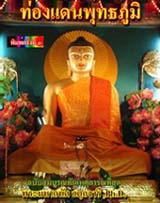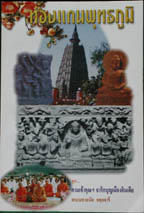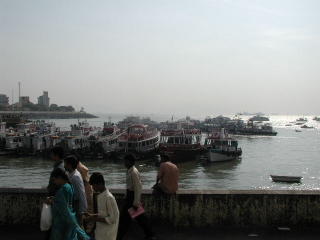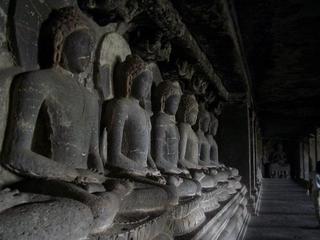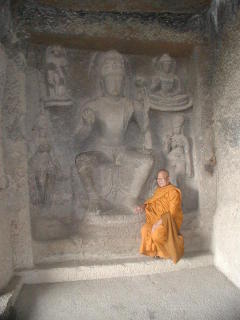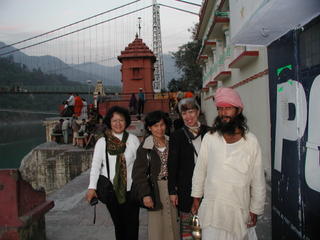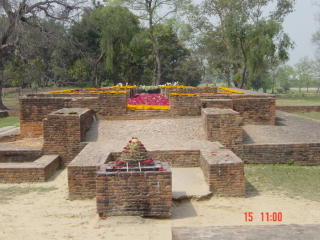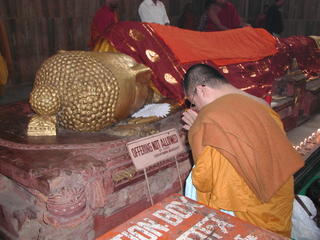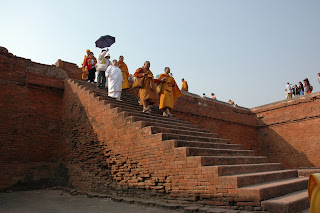
The Pilgrimage Tour and Seminar on Buddhism in India-Nepal
February 24 to March 5, 2011
February 24, 2011 Bangkok-Bodhgaya
9:00 a.m. Check in at the counter of Thai Airways (TG), depart for the Gaya International airport India
2:00 p.m. Arrive at Bodhgaya , meet the tour guide at the airport, and check into the Royal Residency Hotel Bodhgaya.
4:00 p.m. Visit the Mahabodhi Temple for prayers and meditation near the Bodhi Tree. As the place of the Buddha's Enlightenment, Bodhgaya is the spiritual home of Buddhists. It attracts ten of thousands of believers from all over the world. Bodhgaya, situated near the river Neranjara, is one of the holiest Buddhist pilgrimage centers since it was here that the Buddha attained Enlightenment under the Bodhi Tree. Evening chanting and meditation near the stupa. Have dinner and stay overnight at the hotel.
February 25, 2011 Bodhgaya: Seminar on Buddhist Missionary Works at Wat Thai Buddhagaya
After breakfast attend the opening ceremony for the Seminar on Buddhist Missionary Works in the Buddha Hall of Wat Thai Buddhagaya. There will be Thai Buddhist monks from around the world participating in this seminar and Buddhist scholars from universities in India and Thailand. Stay overnight at the Royal Residency Hotel Bodhgaya.
February 26, 2011 Bodhgaya: Seminar on Buddhist Missionary Works at Wat Thai Buddhagaya
The seminar starts after breakfast, and there is a key note speech. In the afternoon, sightseeing tour to the international Buddhist monasteries in the Buddhagaya area. Most countries with a large Buddhist population have a temple or monastery here. The twenty-five-meter Great Buddha Statue in the Japanese Kamakura style was unveiled by his Holiness the Dalai Lama in 1989. Visit the Mahabodhi Temple again for evening prayers. Have dinner and stay overnight at the Royal Residency Hotel Bodhgaya .
Feruary 27, 2011 Bodhgaya-Rajagaha-Magha Puja Chanting Ceremony
In the early morning travel to Rajagaha. Visit the Kichaguta, the first resident house of the Buddha, on the top of the Vulture Peak, as well as the caves of the arahants Sariputta and Moggallana, the great disciples of the Buddha. After lunch visit the oldest Buddhist university, the University of Nalanda. By the late afternoon, attend the Magha Puja Chanting Ceremony at Veruvanaram, the first monastery in the world, offered to the Buddha by King Bimbisara at Rajagaha. Stay at the Royal Residency Rajagaha.
February 28, 2011 Nalanda-Vesali-Kusinara
After breakfast travel to the sacred site of the Vesali Buddha relic stupa and the Mahawana temple, where the first female monk was ordained by the Buddha. Have lunch at Wat Thai Vesali and then travel to the city of Kasia. Stay at overnight at Wat Thai Kusinara.

March 1, 2011 Kusinara-Seminar Closing Ceremony–Lumbini (Nepal)
After breakfast attend the closing ceremony of the seminar in Buddhist missionary works at the Buddha Hall of Wat Thai Kusinara. Then have a lunch break.
After lunch check out from the temple and then visit the sacred site of the Buddha’s Mahaparinibbana, his passing away. Then travel to the border of Nepal. Stay at the Nirawana Hotel.
March 2, 2011 Lumbini-Savatthi
Lumbini is the birthplace of the Buddha. Lumbini grove, the sacred site of Lord Buddha's birth, is today a small village in Nepal twenty-seven kilometers from Sonauli on the Indo-Nepal border. Three hundred years after the Mahaparinirvana, Emperor Ashoka visited Lumbini and erected a pillar there. This pillar, though broken, still remains at the site. It is known as the Rummendei Pillar after the earlier name of the place. Go to the Indian border and travel to the city of Savatthi. Stay overnight at the Hotel Pawan.

March 3, 2011 Sightseeing in Savatthi
In the early morning visit the sacred temple named Jetavana and the Deanmahamongkol Thai nunnery in Savatthi. Savatthi, the capital of the ancient kingdom of Kosala, has the honor of having sheltered the Buddha in the Jetavana Gardens for twenty-four rainy seasons. The city, believed to have been founded by the mythological king Sravast, has age-old stupas, majestic monasteries, and several temples. The Buddha is said to have performed some miracles here.This holy place also has the famous Ananda Bodhi Tree, an offspring of the one tradition says was planted by the Buddha's main disciple. Stay in the Hotel Pawan.
March 4, 2011 Savatthi-Sarnath-Varanasi
After an early breakfast, depart at 6:30 a.m. for Varanasi and have a picnic lunch on the way to Varanasi. In the early part of the evening, visit Sarnath, where the Buddha preached his first sermon in the Deer Park. Sarnath contains most impressive remains from the past, as well as a modern temple. The Dhammarajika, Chaukhandi, and Dharmek stupas are outstanding. There are also the remnants of a monastery, and the beautifully polished Lion Capital of Ashoka. Sarnath contains an extensive library, and at the Mula Gandha Kutir Vihara there are excellent frescoes by Kosetsu Nosu. Then visit the Dhammek Stupa and, finally, attend the evening prayers at the Sri Lankan Temple. Return to the Ramada Hotel for dinner and stay overnight.
March 5, 2011 Sightseeing on the Ganges River-Departure for Bangkok
In the early morning visit the sacred river Ganges before sunrise to see how the Hindus of Varanasi pray to the rising sun and then to the river. Enjoy a boat ride on the Ganges and see the cremation grounds from the boat. Return to the hotel for breakfast. Then go shopping in the government store, which features the famous Varanasi silk. In the afternoon check out from the hotel and depart in the evening from Varanasi on the trip back to Bangkok via Thai Airways (TG).

For the PRICE : Call ++301-787-6108 or Email : t_inthisan@hotmail.com
The price includes;
- International flight Bangkok-Gaya, Varanasi-Bangkok By Thai Airways (TG)
- Accommodation (3-5 stars Hotels & Resorts) with complementary breakfast
- Lunch- Dinner (Buffet)
- Transportation with private coach 45 seats
- Boat Sightseeing Gangese River
- Entrance fee in all monuments
- Thai speaking throughout guide
The price does not include;
- Insurance
- Visa fee for India and Nepal
- Drinks and food are not mentioned in the program
- All other personal expenses
- Services not mentioned in the itinerary
Remarks:
- Confirmation of room & price are subject to space availability at the time of booking only
- All rates are subject to change without prior notices
- All above itinerary is flexible, depending on arrival or departure flights of passengers
- Ground operator reserved the right to amend or adjust itinerary to match with real situation
Contact for more informations :
These Buddhist Pilgrimage tour and seminar on Budhist missionary works sponsored by The Council of the Thai Bhikkhus in the USA. And the Council of the Thai monks in European countries.
For more information contact : Phramaha Thanat Inthisan,Ph.D Wat Thai Washington,D.C. 13440 Layhill Road, Silver Spring, MD 20906 USA. Tel. (301) 871-8660, Cell (301) 787-6108, E-mail: t_inthisan@hotmail.com URL: www.t-dhamma.org, www.thanat.iirt.net



.JPG)
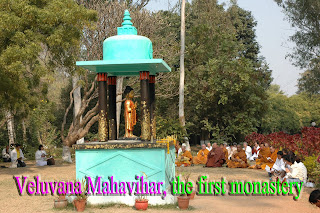
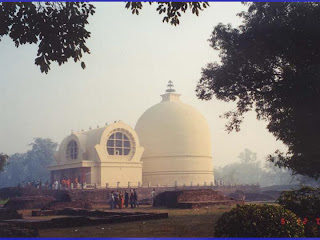.jpg)
.JPG)









